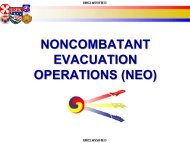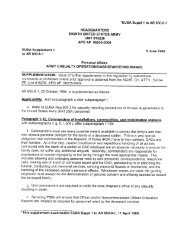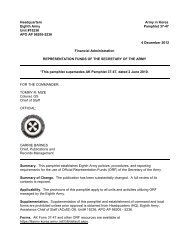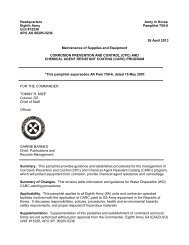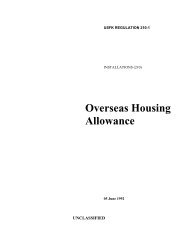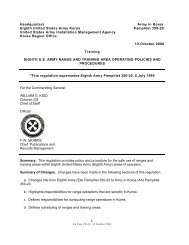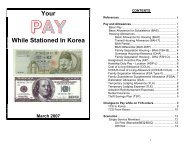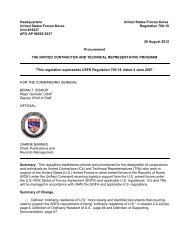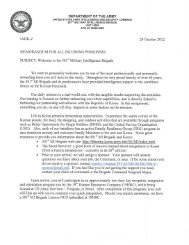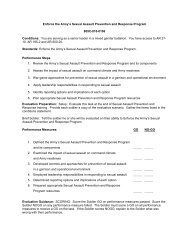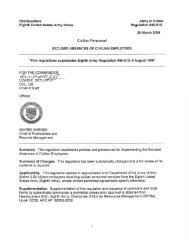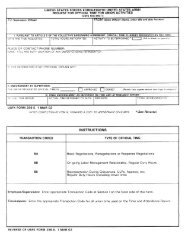CAS3 Staff Officer Guide - U.S. Army
CAS3 Staff Officer Guide - U.S. Army
CAS3 Staff Officer Guide - U.S. Army
You also want an ePaper? Increase the reach of your titles
YUMPU automatically turns print PDFs into web optimized ePapers that Google loves.
57<br />
<strong>Staff</strong> <strong>Officer</strong>'s <strong>Guide</strong><br />
· Use evaluation criteria (EC) to measure, evaluate, and rank order COAs with respect to the desired<br />
end state/outcome during analysis and comparison.<br />
· You must support EC with the facts or assumptions.<br />
· Present EC in order of importance. Be able to describe the relative importance of each of your<br />
evaluation criteria.<br />
· Include the five required elements for each EC:<br />
--Short title: allows you to be concise in later portions of your briefing.<br />
--Definition: leaves no doubt in the briefee’s mind as to what you mean. Be precise.<br />
--Unit of measure: for example, US dollars, feet, etc.<br />
--Benchmark: generally, the point at which a COA becomes an advantage with respect to a<br />
particular criterion. Be able to justify how you came up with the value. Some techniques are<br />
reasoning, historical data, current allocation, verbal/written guidance, regulation, tangible<br />
benefit, and averaging. Use averaging only as a last resort.<br />
--Formula: stated in one of two different ways, that “more or less is better” or subjectively in<br />
terms such as “disc brakes are better than drum brakes.” Always include the benchmark on<br />
the advantage side of the formula.<br />
· A well-thought-out benchmark value is essential for precise analysis. You may also include on<br />
your slide a reason for the benchmark value.<br />
© 2005 <strong>CAS3</strong> For Instructional Purposes Only<br />
Compiled by www.<strong>Army</strong>Toolbag.com



